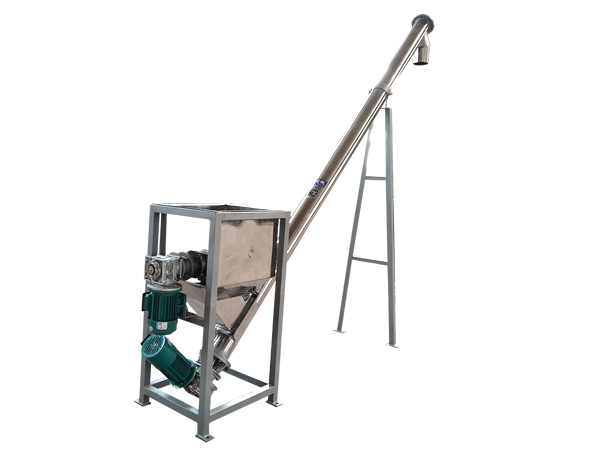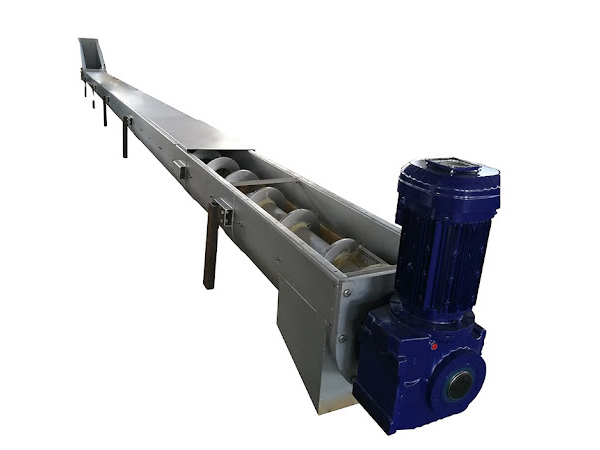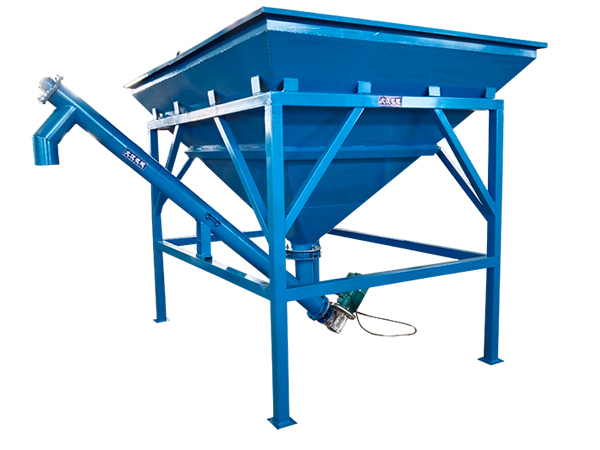Volumetric feeder conveyor
Saturday September-20 2025 14:25:10
What is a volumetric feeder conveyor?
Volumetric feeder conveyor achieves quantitative feeding by controlling the volumetric flow of materials. It typically consists of a hopper, a conveying mechanism, and a drive unit.
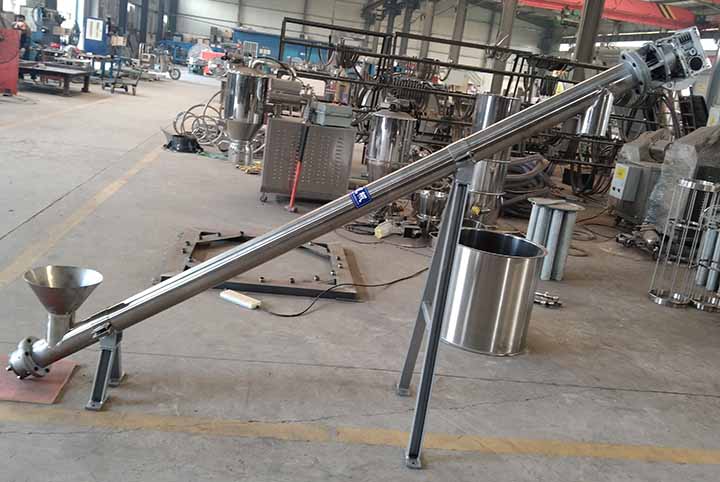
This equipment is suitable for a variety of materials, including plastic pellets, grain, flour, cement, crushed ore, and coal lumps. Its feeding capacity typically ranges from 0.1 to 100 m³/h, with a feeding accuracy typically maintained at ±2% to ±5%. Control methods typically rely on mechanical or basic electrical control, adjusting the screw speed to vary the feed rate. Based on the screw structure, this type of feeder conveyor is categorized as U-shaped, inclined, or vertical.
How does a volumetric feeder conveyor work?
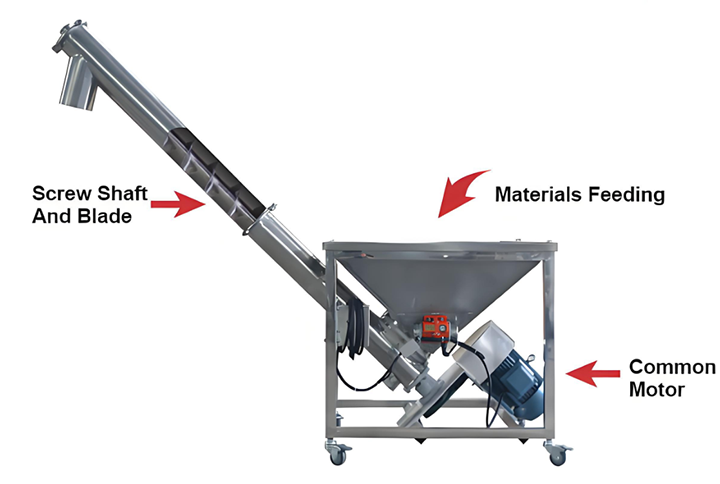
The core of a volumetric feeder conveyor is the combination of volumetric metering and continuous conveying. For example, in a screw conveyor, material from a silo is fed by gravity into a fixed-volume metering chamber in the conveyor housing. The drive unit rotates the screw blades, delivering a fixed volume of material per revolution. By adjusting the motor speed, the number of deliveries per unit time can be controlled, achieving precise control of the feed rate. Materials are conveyed in closed or semi-closed spaces to reduce dust leakage. Sensors monitor flow rate in real time, and the control system adjusts the speed promptly in the event of deviations to ensure stability.
What is the function of a volumetric feeder conveyor?
Volumetric feeder conveyors play a key role in the precise distribution of materials in industrial production. Firstly, they can quantitatively and continuously deliver materials from upstream silos to mixing, forming, and packaging equipment according to the needs of downstream processes, preventing excessive material accumulation or insufficient supply and ensuring continuous production line operation. Secondly, their quantitative conveying function allows for precise control of material ratios, especially in industries with strict material ratio requirements, such as chemicals and food processing. This improves product quality and stability, while also reducing material waste and lowering production costs.
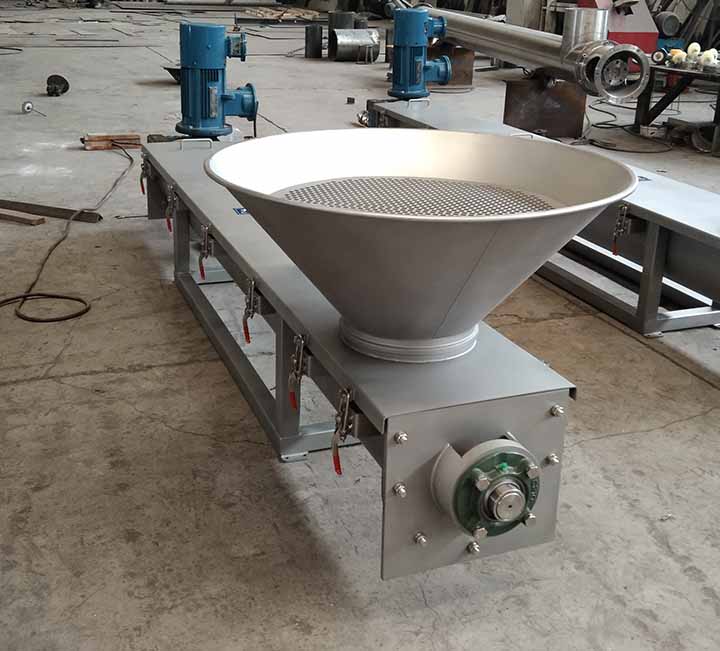
Volumetric feeder conveyor dimensions
| LS Type | 100 | 160 | 200 | 250 | 315 | 400 | 500 | 630 | 800 | 1000 | 1250 |
| GX Type | 200 | 250 | 300 | 400 | 500 | ||||||
| Spiral diameter(mm) | 100 | 160 | 200 | 250 | 315 | 400 | 500 | 630 | 800 | 1000 | 1250 |
| pitch(mm) | 100 | 160 | 200 | 250 | 315 | 355 | 400 | 450 | 500 | 560 | 630 |
| Rotating speed(r/min) | 140 | 120 | 90 | 90 | 75 | 75 | 60 | 60 | 45 | 35 | 30 |
| Delivery volume QΦ=0.33(m3/h) | 2.2 | 7.6 | 11 | 22 | 36.4 | 66.1 | 93.1 | 160 | 223 | 304 | 458 |
| power Pd 1=10m(KW) | 1.1 | 1.5 | 2.2 | 2.4 | 3.2 | 5.1 | 4.1 | 8.6 | 12 | 16 | 24.4 |
| power Pd 1=30m(KW) | 1.6 | 2.8 | 3.2 | 5.3 | 8.4 | 11 | 15.3 | 25.9 | 36 | 48 | 73.3 |
| Rotating speed(r/min) | 120 | 90 | 75 | 75 | 60 | 60 | 45 | 45 | 35 | 30 | 20 |
| Delivery volume QΦ=0.33(m3/h) | 1.9 | 5.7 | 18 | 18 | 29.1 | 52.9 | 69.8 | 125 | 174 | 261 | 305 |
| power Pd 1=10m(KW) | 1.0 | 1.3 | 2.1 | 2.1 | 2.9 | 4.1 | 4.7 | 6.8 | 9.4 | 14.1 | 16.5 |
| power Pd 1=30m(KW) | 1.5 | 2.3 | 4.5 | 4.5 | 7 | 8.9 | 11.6 | 20.4 | 28.3 | 42.2 | 49.5 |
| Rotating speed(r/min) | 90 | 75 | 60 | 60 | 45 | 45 | 35 | 35 | 30 | 20 | 16 |
| Delivery volume QΦ=0.33(m3/h) | 1.4 | 4.8 | 15 | 15 | 21.8 | 39.6 | 54.3 | 97 | 149 | 174 | 244 |
| power Pd 1=10m(KW) | 0.9 | 1.2 | 1.9 | 1.9 | 2.5 | 3.4 | 4.3 | 5.4 | 8.1 | 9.5 | 13.3 |
| power Pd 1=30m(KW) | 1.2 | 2.2 | 3.8 | 3.8 | 5.4 | 6.8 | 9.2 | 16 | 24.4 | 28.6 | 39.9 |
| Rotating speed(r/min) | 75 | 60 | 45 | 45 | 35 | 35 | 30 | 30 | 20 | 16 | 13 |
| Delivery volume QΦ=0.33(m3/h) | 1.2 | 3.8 | 11 | 11 | 17 | 31.7 | 46.5 | 73.0 | 99.3 | 139 | 199 |
| power Pd 1=10m(KW) | 0.75 | 1.1 | 1.6 | 1.6 | 2.1 | 3.1 | 3.7 | 4.6 | 5.7 | 7.7 | 11 |
| power Pd 1=30m(KW) | 1.1 | 1.8 | 3.4 | 3.4 | 4.4 | 5.6 | 8 | 14 | 16.7 | 23.2 | 33 |
Volumetric feeder conveyor types
Volumetric feeder conveyors come in many types. Based on the spiral structure, they are categorized into U-shaped, inclined, and vertical types. Each device has its own unique characteristics, and you can choose the model based on your needs.
U-shaped volumetric feeder conveyors are suitable for granular or small-sized materials such as grain, plastic pellets, coal, and ore fragments. They require medium fluidity and low to medium hygroscopicity. High humidity can cause sticking to the wall, and they are relatively abrasive. They operate at temperatures between 20°C and 80°C, with humidity ≤60%. They are typically made of carbon steel or stainless steel, with a conveying capacity of 5 to 100 m³/h.
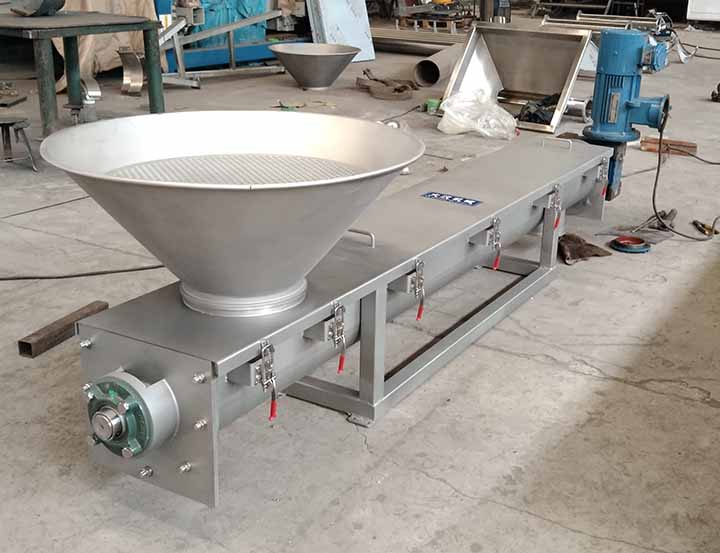
Inclined volumetric feeder conveyors are suitable for powdered or small-sized materials such as flour, cement, and feed powder. They require medium fluidity and low hygroscopicity. They are prone to clumping and clogging when wet, and their hoppers require wear-resistant treatment. They operate at temperatures between 10°C and 100°C, with humidity ≤55%. They are typically made of carbon steel or wear-resistant alloy steel, with a conveying capacity of 3 to 80 m³/h.
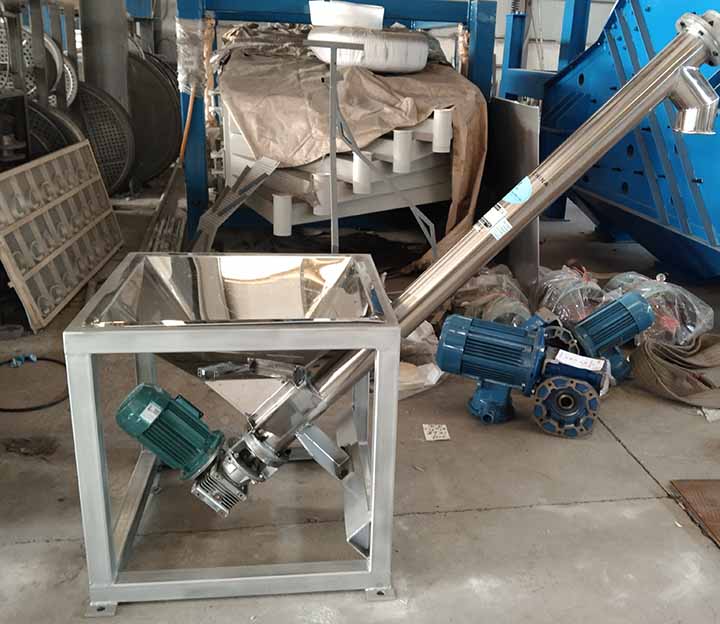
Vertical volumetric feeder conveyors are suitable for fine powders and light, small particles, such as talcum powder, coal powder, and light resin granules. They have good flowability, low hygroscopicity, and are less prone to screw adhesion in high humidity. They are also less abrasive. They operate in temperatures between 0°C and 90°C, with a humidity of ≤50%. Stainless steel is often used to prevent material contamination, and their conveying capacity ranges from 2 to 50 m³/h.
What is the difference between a volumetric feeder conveyor and a conveyor?
The key difference between a volumetric feeder conveyor and a conveyor lies in their functional focus. Conveyors, such as belt conveyors, primarily transport materials from point A to point B. They lack quantitative control capabilities, and their conveying capacity varies with the amount of material stored, resulting in low accuracy. They are suitable for applications where quantitative control isn't required, such as logistics sorting and transporting rough materials in mines. They also have a simpler structure and are often open. Volumetric feeder conveyors, on the other hand, add quantitative feeding capabilities to conveying. Through fixed volumetric metering and speed regulation, they precisely control the conveying capacity per unit time and offer higher accuracy. They are suitable for production processes requiring quantitative batching, such as chemicals, foods, and building materials. They are often enclosed, prioritizing dust prevention and material stability.
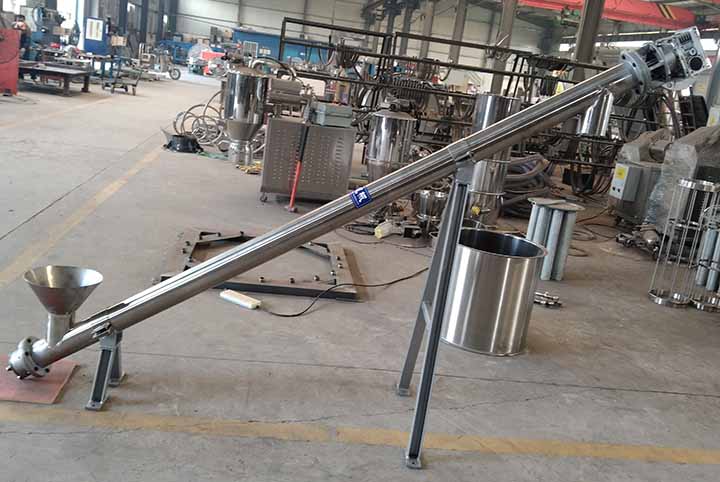
What is the difference between a gravimetric feeder and a volumetric feeder conveyor?
The key difference between gravimetric feeders and volumetric feeder conveyors lies in their metering method. The former relies on load cells to measure by weight, achieving an accuracy of ±0.1%-±1%. This makes them suitable for applications requiring high precision, such as pharmaceutical raw materials. However, they are complex and costly, sensitive to material properties, and susceptible to vibration. Regular calibration of the load cells is also required, leading to high maintenance costs. The latter measures by volume, calculating material volume using a fixed volumetric metering chamber and rotational speed. With an accuracy of ±2%-±5%, they are simpler, less expensive, highly adaptable to different materials, and less susceptible to vibration. Maintenance only requires regular cleaning of the blades and housing, making them more suitable for industrial applications with moderate precision requirements and a focus on cost-effectiveness.
Volumetric Feeder Conveyor Manufacturer
Among volumetric feeder manufacturers, our factory has advantages. With years of experience in the field of vibratory conveying equipment and a mature R&D team, we can customize U-shaped, inclined, and other models to address unique material conveying challenges based on customer material characteristics and production requirements. We utilize high-precision equipment, with core components constructed from wear-resistant and corrosion-resistant materials to ensure longevity. A comprehensive quality inspection system ensures feeding accuracy. We also provide timely after-sales support, effectively reducing customer operating and maintenance costs. We have accumulated a wealth of successful case studies in industries such as building materials, chemicals, and food.
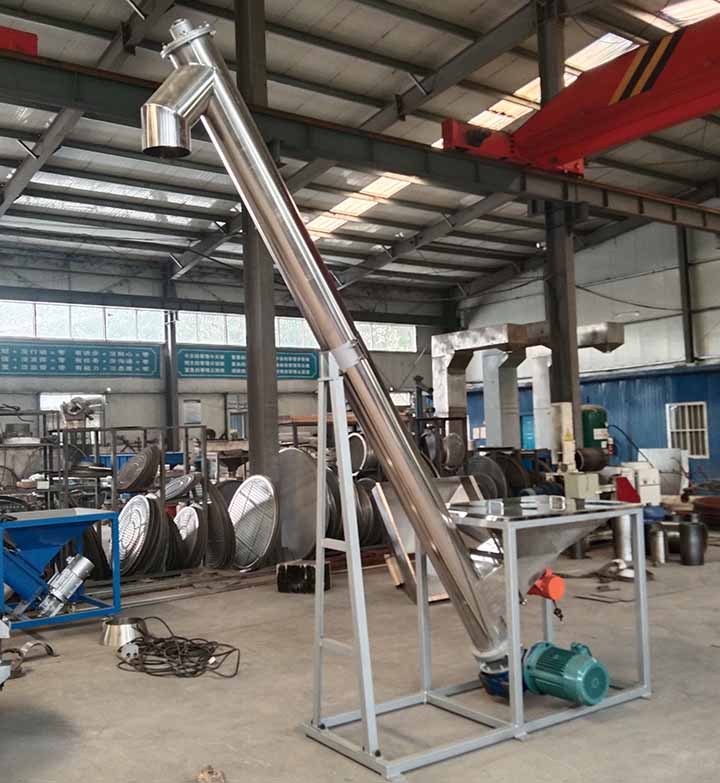
Volumetric feeder conveyors, as industrial equipment that combines both quantitative feeding and continuous conveying, are a key component of production lines in these industries, including chemicals, food, and building materials, thanks to their adaptability to a wide range of materials, stable feeding accuracy, and flexible control methods. Different types of equipment, such as U-shaped, inclined, and vertical, are suitable for various conveying scenarios. Compared to conveyors and gravimetric feeders, they offer more cost-effective solutions for quantitative delivery. Professional manufacturers like ours, through customized design, high-quality materials, and comprehensive after-sales service, further enhance the practicality and reliability of our equipment, providing strong support for efficient and stable industrial production.
